Take a look at the Wikipedia definition of a beauty dish and you will likely come away more confused than ever – I sure started wondering if I knew what it was.
What follows is an easy-to-understand answer to the question “What is a Beauty Dish?” – Wikipedias definition not withstanding.
I will also describe what type of photography to use one on, when and how to use them.
Plus …
the beauty dish/dishes I recommend for different situations and the one beauty dish for all occasions.
Contents
A Beauty Dish - think dinner plate or shallow bowl shape..
Used primarily in portrait photography, a beauty dish is a light reflector designed to spread artificial lighting over a larger area and, in so doing, create softer shadows.
What is the difference between a beauty dish and other light modifiers?
Primarily most modifiers diffuse light while a beauty dish reflects light.
A beauty dish’s unique design illuminates the subject from all angles and can be used to highlight angles and create subtle contrasts.
A beauty dish is shallower than other modifiers shaped much like an inverted dinner plate. A reflector plate is situated directly in front of the light source that causes the light to reflect back into and out to the sides of the main dish.

While all the light is reflected forward the shape of a beauty dish has the effect of wrapping around the subject – enveloping him/her from all sides rather like a cloak.
Put another way the parabolic shape of a beauty dish creates a larger and softer light source that wraps around the subject eliminating intense shadows.
So what is a “softer Light” source?
Imagine for a moment a flashlight (torch) shining at a person’s face from a fairly close distance – the light would be bright and the shadows harsh.
Now imagine turning that same flashlight around and bouncing the beam off the inside of a white dinner plate.
The light would bounce straight back at your subject, it has no-where else to go with the plate in the way.
The light that reaches the face now comes off a larger source – the dinner plate, is weaker, much softer and creates no harsh shadows.
What to Look For In Your Beauty Dish
Size and Material
Choices abound.
The traditional beauty dish is made of light weight aluminium and comes in a variety of sizes from about 16″ up to 40″.
Aluminium beauty dishes are still very popular and used primarily by portrait photographers with dedicated studios who have no intention of taking the beauty dish to a different location.
On the other hand we also now have collapsible beauty dishes which offer the added benefit of being more transportable with the ability to add different diffusers to them.
A diffuser used in this way further reduces the strength of the light and creates and even softer light.
Further options are available in the form of socks or grids that in turn can produce a subtle or dramatic look.
The collapsible beauty dish was designed for the photographer who travels to the client to take the photos. But studio photographers are finding them equally as good as the aluminium ones with an additional advantage of taking up less storage space.
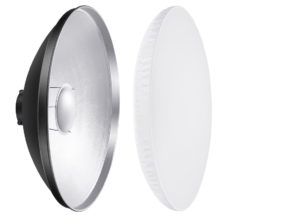
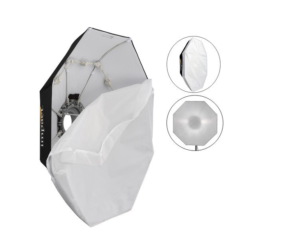
Silver or White?
Beauty dishes come with a white or silver reflector coatings.
The silver reflectors produce a more dramatic light than the more traditional softer, slightly more absorbent white option.
The choice of reflector colour is personal – many photographers have both.
For my own portrait work I prefer the white reflector.
Light Source and Connection
Check to see if the beauty dish you like has the correct fitting (connection) for the light source you intend using.
Most beauty dishes will need to be purchased in conjunction with a fitting.
There are a range of different fittings for strobes, speed lights and LED lighting.
The most common are Godex and Bowens fittings.
I have the Bowens fitting to go with my strobes.
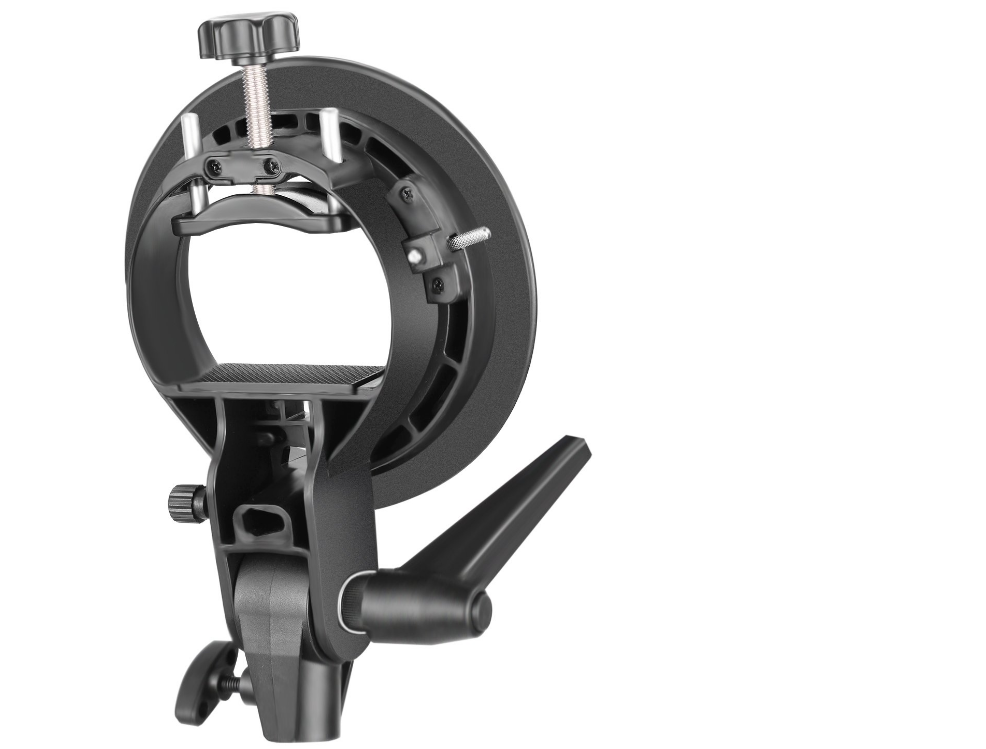
One For Every Budget
There is a big variance in price for beauty dishes.
Ranging from as little as $35.00 up to beauty dishes in the hundreds of dollars.
Shop around and see what suits your pocket or if in fact the more expensive (usually better quality build) are worth the extra money.
I do a fair amount of portrait work and have found my beauty dish more than adequate – and it only cost me about $80.00 with the Bowens fitting at the time that I bought it.
Positioning and Aiming Your Beauty Dish
There are numerous positions, heights and angles that you can place your beauty dish when photographing and the mood or image you intend creating will determine these.
For straight on beauty shots (female models) I would suggest you start at a height above your models eye with the beauty dish pointed slightly down.
Place the beauty dish directly in line with the lens to start and then move it slightly left or right to see the different lighting effects.
Beauty dishes are often used very close to the subject. In order to get the light on the same line as the lens you will need a boom arm to ensure the lights stand isn’t in picture.
You will probably find that the best photos are produced with the beauty dish slightly off centre.
This is particularly flattering to skin tones while at the same time highlighting gorgeous cheek bones, eyes and eyelashes and brows.
This angle also gives definition to the chin and collar bones.
Final Word On Beauty Dishes
As can be seen there are a variety of features and benefits to take into account.
With most beauty dishes there is not such a huge difference that it warrants hours and hours of research.
To me the biggest decision was the size I wanted and in the end I went for the 40″ collapsible version (although it is permanently set up in my little studio) with the white reflector and Bowens fitting.
All for under $80.00 and perfect for my needs.
I opted for the larger beauty dish as I shoot portraits from the waist up.
Get a beauty dish if you feel you need one – they definitely do the job of softening skin tones and shadows and will save you a lot of time in post processing.
I hope this post on beauty dishes has simplified any mystery surrounding these simple yet very effective studio aids and as always I welcome your comments, experiences, questions and observations in the comments section below.9

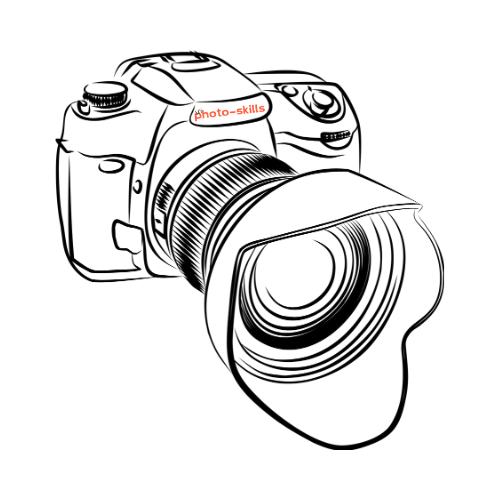
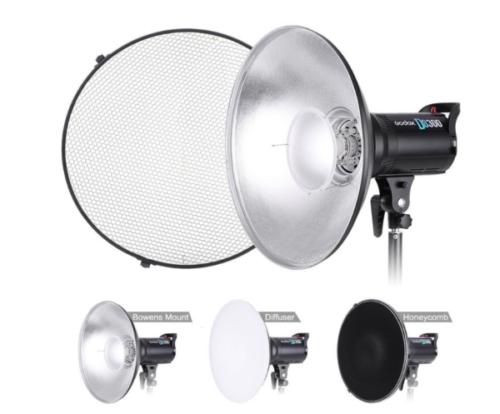
Hi Lawrence, thank you very much for publishing a great and informative article about Beauty Dish. In your article “There are a range of different fittings for strobes, speed lights and LED lighting”. But I need to know that, is there any option for lighting backup in electricity load shedding time?
Hey Abdul
I take it you live in one of those places (South Africa or Zimbabwe perhaps) where load shedding occurs?
Lights can perform magic with photography but miracles – well they take longer and may require a change of government!
I would suggest you get battery powered – rechargeable when you do have power, strobe light for your lighting purposes.
I wrote a post about strobes that you could read up on.
Hope that helps.
Lawrence
As someone who is getting into creating videos for YouTube. I have been researching lighting options. While I have never heard of the Beauty Dish I think it might work wonders for me. I have to wear glasses to see and it is very difficult to get lighting that does not reflect my glasses shadow on my face. I am hoping this will solve that. Do you think a Beauty Dish would work well with those of us who wear thicker glasses?
Hi Pamela
Thank you for your excellent question.
You are definitely on the right track with the beauty dish giving a nice soft wrap around lighting effect. Unfortunately the beauty dish is based on a strobe or flash so won’t do for videos where you need constant light such as that provided by an LED.
A much better option for you, that will give the same or similar results, would be the Inkeltech Ring Light. Its a permanent LED light in a circular shape.
As far as reflections on glasses go I have found having the lights above eye level alleviate this problem. Just experiment with different heights until you find a level where there is no reflection.
And now that you have brought it up I am going to look into doing a full review on it – so thank you for that idea. I am sure there are many others doing YouTube videos that require lighting solutions.
Thanks once again for your excellent question and best of luck with your video productions.
All the best
Lawrence